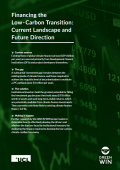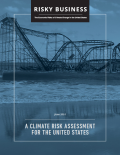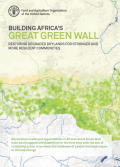This document is a contribution to the OECD Project on "Behavioural Economics and Environmental Policy Design". It provides succinct, one-page summaries of the intervention studies analyzed to date, with an emphasis throughout on how the results are relevant for environmental policy. It also describes a potential framework for expanding this collection of examples into an online searchable inventory. It has been prepared by Laura Vong (formerly OECD Secretariat and Université de Nantes) and overseen by Zachary Brown (OECD Secretariat).

Existing flows of global climate finance (at least $391 billion per year) are sourced primarily from Development Finance Institutions (DFIs) and project developers themselves. A substantial ‘investment gap’ remains between the existing levels of climate finance, and those required to achieve the requisite level of decarbonisation to maintain a 2°C pathway (over $1 trillion per year). Institutional investors hold the greatest potential for filling the investment gap because they hold about $93 trillion worth of assets and seek long- term, stable returns, which are potentially available for climate finance investments. They currently contribute little to existing climate finance flows (~0.2%). Further research by the GREEN-WIN project seeks to determine how to effectively develop the drivers and alleviate the barriers faced by institutional investors for deploying the finance required to develop the low-carbon, climate-resilient economy.

This report examines the opportunities for American businesses and investors in a clean energy economy. It presents technology choices and outlines near- and medium-term investment opportunities across nine U.S. census regions. It finds that lowering climate risk by building a clean energy economy is technically and economically achievable using commercial or near-commercial technology.

A Climate Risk Assessment for the United States identifies the economic risks posed by a changing climate. The U.S. will likely face the effects of human-induced climate change including rising seas and more frequent bouts of extreme heat. The report identifies striking economic impacts from climate change, from the near-term to the end of the century across all 50 U.S. states.

